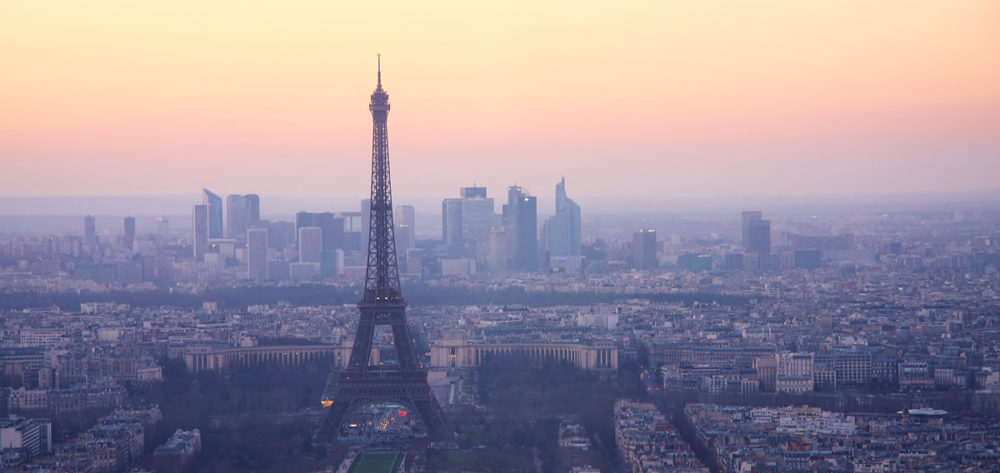In less than a week, the city of Paris, still reeling from a vicious terrorist attack, will turn its attention to a far more hopeful endeavor—playing host to a two-week summit on climate change that marks one of the most important international gatherings in my lifetime.
At the summit, world leaders will try to hash out a global agreement to cut emissions of heat-trapping gases that can give our kids—and their kids—a chance to live in a world that is not overcome with heat waves, droughts, floods, and other ravages of climate change. If we succeed, we make a meaningful down payment on our obligation to future generations. If we fail, future generations will suffer from our lack of will to rise to the challenge. It is that simple.
How will we know if the Paris climate negotiations are successful? Here are the key outcomes to look for:
Universality. In the run up to this summit, about 150 countries—whose global warming emissions account for almost 90 percent of the world’s total—have already made pledges (called Intended Nationally Determined Commitments, or “INDCs”) to reduce emissions and take other positive actions such as preserving the ability of forests to sequester carbon. This is the first time since climate negotiations started two decades ago that virtually all the world’s nations have committed to being part of the solution. By comparison, the 1997 Kyoto Protocol included pledges for reductions by just 37 countries and comprising well under half of global emissions. The broad participation this time around means that we can fairly say that Paris is already a partial success.
Monitoring, reporting, and verification. The Paris agreement is not expected to bind countries to meet their pledges, nor provide for a sanction if they do not. This is of course disappointing, but there seems to be no way around it. For one thing, were the reduction targets to be legally binding, the U.S. Senate would likely need to ratify the agreement with a 2/3 vote—an impossible hurdle to surmount at this time. So, instead of direct enforcement mechanisms, the agreement will rely upon “naming and shaming” countries that don’t meet their pledges. In order for this strategy to work, there must be a reliable and common protocol for each country to monitor, report, and verify their progress, so we can know who is and who is not abiding by their pledges. The particulars of that protocol are certainly something to watch for.
Raising the ambition level over time. We know that the reductions countries have proposed, while an important step forward, will not collectively achieve the goal of holding global temperature increases to 2 degrees Celsius (3.6 degrees Fahrenheit), the threshold scientists have set to stave off the worst effects of global warming. Analysis done so far suggests that the aggregate reductions could get us to a world warming by 2.7-3.7 degrees Celsius. This is surely a lot better than business-as-usual estimates of 4-6 degrees Celsius warming, but it is not enough. So, to be a success, the agreement must require countries to revisit their pledges in the years to come, raising the level of ambition to take into account advances in technology and economies of scale that make cutting emissions easier or less expensive. A good outcome would be a commitment to revise pledges every five years after the agreement begins in 2020. This is especially important because the pledges of China and the European Union call for reductions by 2030. But given the so-called “ambition gap,” we can’t afford to wait until 2030 to revisit this.
Long-term goal. Another important element to watch for in the negotiations is a long-term, agreed-upon goal that is easy to understand and can spur action. A long-term goal should tell countries what to shoot for as they raise their level of ambition over time. It could also send an unmistakable signal that the age of fossil fuels is coming to a close, steering financiers, inventors, and many others away from extracting oil, gas and coal and toward clean energy technology development.
Equity and finance. A final outcome to watch for is how the negotiations handle the issue of fairness for poorer countries that have contributed little to climate change, are particularly vulnerable to its effects, and have the fewest resources to cut their own emissions and prepare for what is coming. In 2009, developed countries promised to mobilize $100 billion in public and private financing to assist developing countries. It is not clear where those funds will come from, but many countries are counting on it. A number of these nations, such as India, have made “conditional pledges”—meaning, commitments to cut emissions that are conditioned upon funds and technology from developed countries to help them grow in a low-carbon, sustainable way. For the Paris agreement to work, developed countries will need to make clear commitments about how they plan to help developing countries both mitigate and adapt to climate change.
It remains to be seen whether, based on these criteria, we will be able to call the Paris agreement a success. With just a few weeks to go, many fundamental issues remain unresolved and, on some of them, many countries still seem far apart. We must hope that, given this rare and solemn opportunity, and the devastating cost of failure, world leaders will set aside their differences to reach a global agreement that inspires pride and confidence.
I am heading to Paris shortly with a team from UCS. Look for more from us in the coming weeks on how we are doing.
Featured photo by Adrian Scottow.

